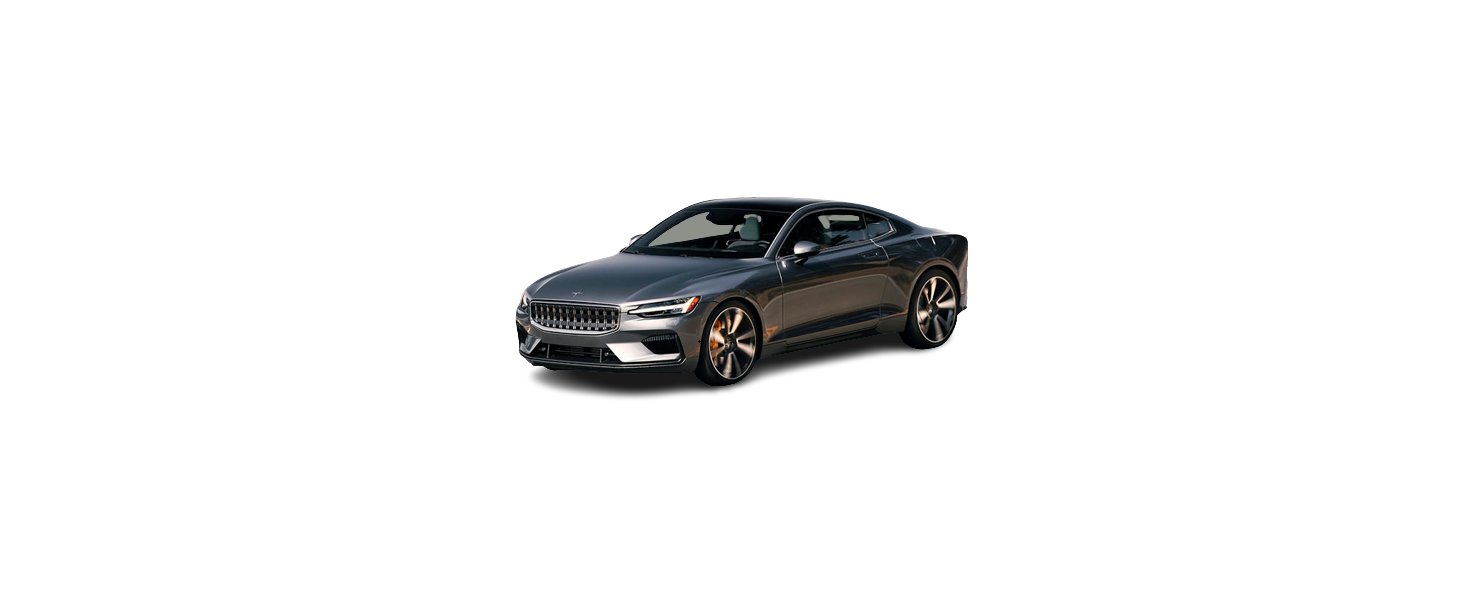2021 Polestar 1 Media player
Compatible file formats for media
Audio files
| Format | File extension | Codec |
|---|---|---|
| MP3 | .mp3 | MPEG1 Layer III, MPEG2 Layer III, MP3 Pro (mp3 compatible), MP3 HD (mp3 compatible) |
| AAC | .m4a, .m4b, .aac | AAC LC (MPEG-4 part III Audio), HE-AAC (aacPlus v1/v2) |
| WMA | .wma | WMA8/9, WMA9/10 Pro |
| WAV | .wav | LPCM |
| FLAC | .flac | FLAC |
Video files
| Format | File extension |
|---|---|
| MP4 | .mp4, .m4v |
| MPEG-PS | .mpg, .mp2, .mpeg, .m1v |
| AVI | .avi |
| AVI (DivX) | .avi, .divx |
| ASF | .asf, .wmv |
| MKV | .mkv |
Subtitles
| Format | File extension |
|---|---|
| SubViewer | .sub |
| SubRip | .srt |
| SSA | .ssa |
DivX®
DivX-certified devices have been tested for high-quality DivX (.divx, .avi) video playback. When you see the DivX logo, you have the freedom to play your favorite DivX movies.
| Profile | DivX Home Theater |
| Video codec | DivX, MPEG-4 |
| Resolution | 720×576 |
| Audio speed (bit rate) | 4.8Mbps |
| Frame rate | 30 fps |
| File extension | .divx, .avi |
| Max. file size | 4 GB |
| Audio codec | MP3, AC3 |
| Subtitles | XSUB |
| Special functions | Multiple subtitles, multiple audio, resume play |
| Reference | Meets all requirements of the DivX Home Theater profile. Visit divx.com for more information and software tools to convert your files into DivX Home Theater video. |
Connecting a device via Bluetooth®
Many cellular phones on the market currently offer wireless Bluetooth® technology, but not all phones are fully compatible with the vehicle.
The procedure for connecting a media device is the same as for connecting a cellular phone to the vehicle via Bluetooth®.
For some phones, the Bluetooth volume on the phone must be manually set to 100% in order for the audio volume in the vehicle to be high enough. This setting needs to be made for each phone that is connected. The setting is adjusted separately for phone calls and media streaming. The system will then remember the setting and it will not need to be repeated the next time the phone is connected.
Connecting a device via the USB port
The phone must be plugged into the USB port with the white frame to use Apple CarPlay or Android Auto.
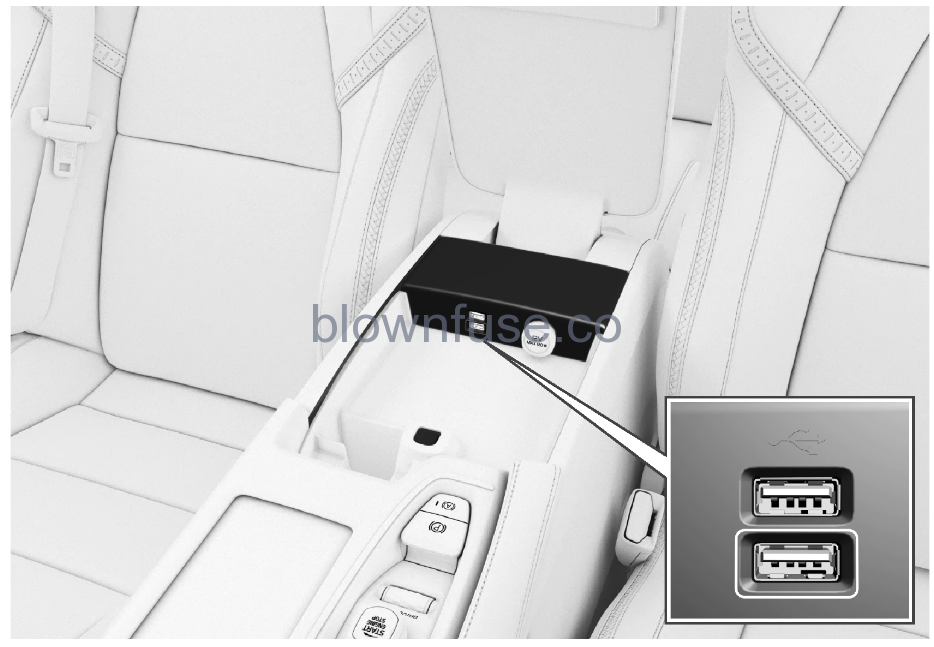 USB ports (type A) in the tunnel console. Route the cable forward to help avoid pinching when the cover is closed.
USB ports (type A) in the tunnel console. Route the cable forward to help avoid pinching when the cover is closed.
Controlling and changing media
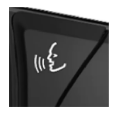
The media player can be controlled using voice control, the right-side steering wheel keypad or the center display.
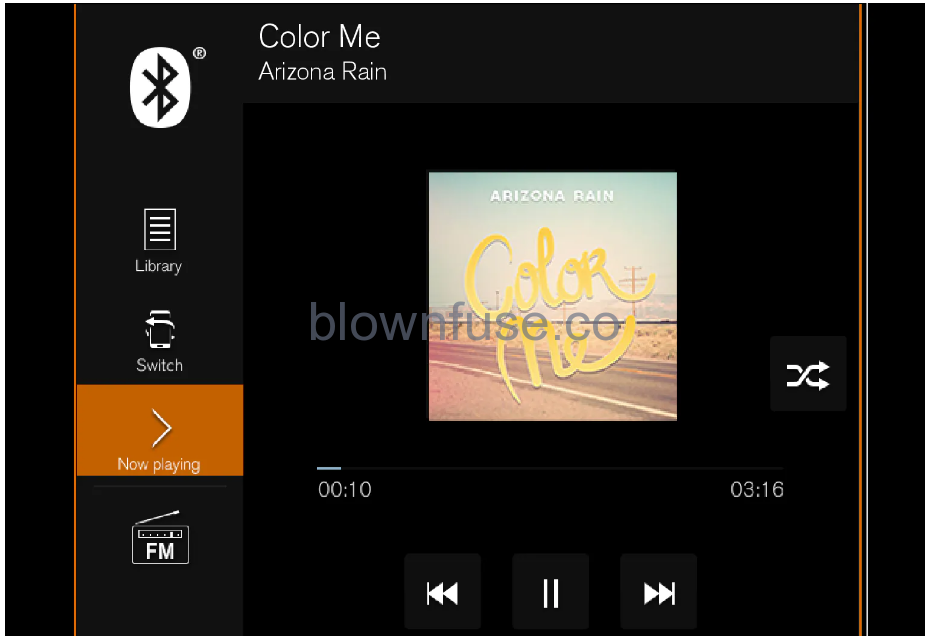
Volume – turn the knob under the center display or tap ![]() on the right-side steering wheel keypad to raise or lower the volume.
on the right-side steering wheel keypad to raise or lower the volume.
Play/pause – tap the image for the track you would like to play, or press the button below the center display or ![]() on the right-side steering wheel keypad.
on the right-side steering wheel keypad.
Changing track/song – tap the desired track in the center display, or press ![]() or
or ![]() below the center display or on the right-side steering wheel keypad.
below the center display or on the right-side steering wheel keypad.
Rewinding/fast-forwarding – tap the time axis in the center display and drag it sideways, or press and hold ![]() or
or ![]() below the center display or on the right-side steering wheel keypad.
below the center display or on the right-side steering wheel keypad.
Changing media source – select from among previous sources in the app, tap the desired app in App view or use the right-side steering wheel keypad to select the app in the app menu ![]() .
.

Library – tap the button to play from the library.

Shuffle – tap the button to play tracks in a random order.

Similar– tap the button to use Gracenote to search for similar music on the USB device and create a playlist from the music found. The playlist can contain up to 50 tracks.
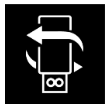
Change device – tap the button to toggle between USB devices when more than one is connected.
Gracenote®
Gracenote MusicID® is a standard for music recognition. It can identify and analyze the metadata of music files and present information about the music. Metadata from different sources may sometimes be inconsistent or insufficient.
Because Gracenote supports phonetic processing of artist name, album titles and genres, voice control can be used to control music playback.
- Tap Settings in the Top view.
- Tap .
- Choose settings for Gracenote data:
- Gracenote® Online Search – search Gracenote’s online database for currently playing media.
- Gracenote® Multiple Results– select how Gracenote data should be displayed if there are multiple search results.
| 1 – the file’s original data will be used. | |
| 2 – Gracenote data will be used. | |
| 3 – Gracenote or original data can be selected. |
- None – no result will be displayed.
Updating Gracenote
The contents of the Gracenote database are continuously updated. Download the latest update to take advantage of improvements.
Media player
When the vehicle is connected to the Internet, it is also possible to listen to web radio, audio books and to access music services via apps.
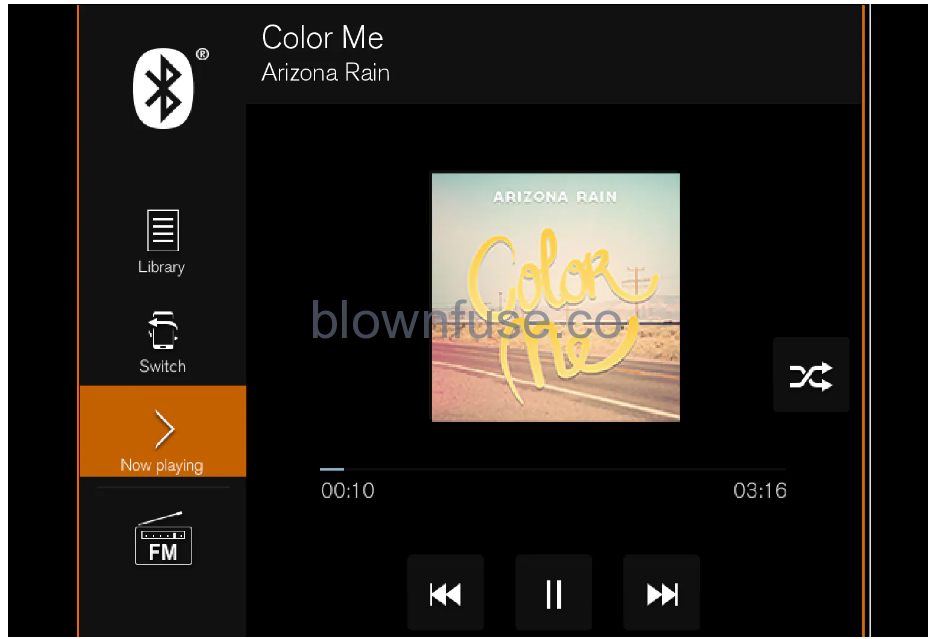
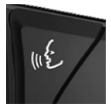
The media player is controlled from the center display. Several functions can also be controlled using voice control or the right-side steering wheel keypad.
The radio, which is also handled by the media player, is described in a separate section.
Media searches
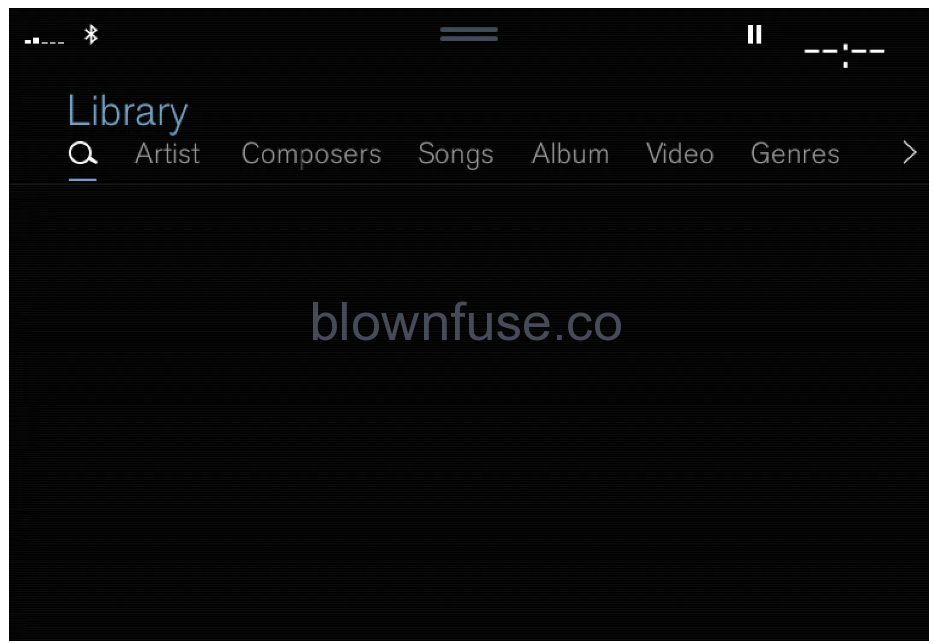
- Tap
 .
.
> Search view will displayed and the keyboard will open.
- Enter a search word/phrase.
- Tap Search.
> A search will be performed on connected devices and the results will be displayed by category.
Swipe the screen horizontally to display each category separately.
Playing media
The radio can also be controlled in the media player. See the section describing the radio.
Starting a media source
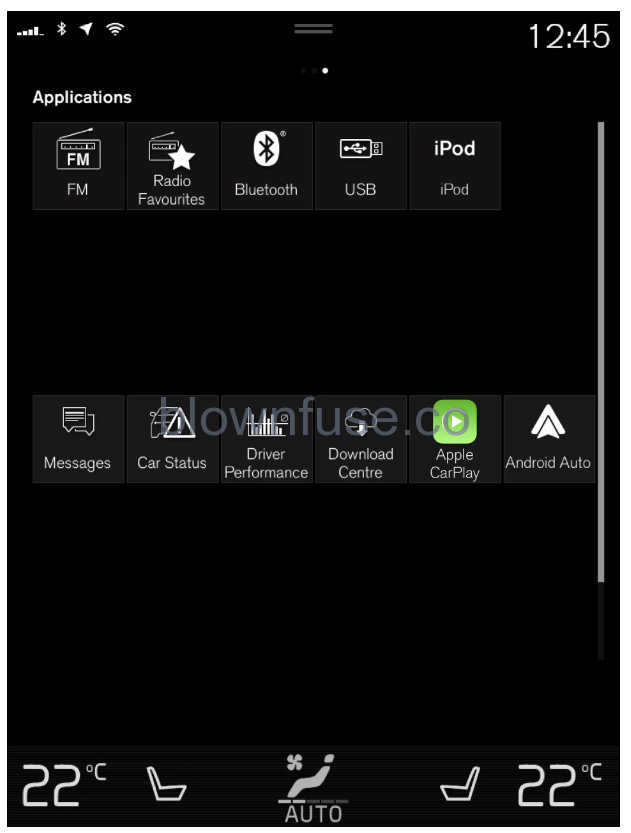 App view. (Generic illustration.)
App view. (Generic illustration.)
USB flash drive
- Inset a USB flash drive.
- Open the USB app from App view.
- Select the track you would like to play.
> Playback will begin.
MP3 player and iPod®
To start playback from an iPod, the iPod app must be used (not USB).
When an iPod is used as source, the car’s audio and media system has a menu structure similar to the iPod player’s own menu structure.
- Connect a media source.
- Start playback in the connected media source.
- Open the app (iPod, USB) from App view.
> Playback will begin.
Bluetooth-connected device
- Activate Bluetooth in the media source.
- Connect a media source.
- Start playback in the connected media source.
- Open the Bluetooth app from App view.
> Playback will begin.
For some phones, the Bluetooth volume on the phone must be manually set to 100% in order for the audio volume in the vehicle to be high enough. This setting needs to be made for each phone that is connected. The setting is adjusted separately for phone calls and media streaming. The system will then remember the setting and it will not need to be repeated the next time the phone is connected.
Media with Internet connection
Medial playback from apps with Internet connection:
- Connect the vehicle to the Internet.
- Open the app from the App view.
> Playback will begin.
Read the separate section on how to download apps.
Video
- Connect a media source.
- Open the USB app from App view.
- Tap the title you would like to play.
> Playback will begin.
CarPlay is described in a separate section.
Android Auto is described in a separate section.
Playing media via the USB port
Devices with rechargeable batteries can be charged when they are connected via the USB port and the ignition is in mode I, II or the engine is running.
The content on the external source can be read faster if it only contains data of a compatible format. Video files can also be played via the USB port.
Some MP3 players have their own file system that the vehicle has support for.
Streaming media via Bluetooth®
In order for the media player to be able to wirelessly play audio files from an external device, the device must be connected to the vehicle via Bluetooth.
Technical specifications for USB devices
Any folder structures will not be shown in the center display during playback.
| Max. number | |
|---|---|
| Files | 15 000 |
| Folders | 1 000 |
| Folder levels | 8 |
| Playlists | 100 |
| Tracks in a playlist | 1 000 |
| Subfolders | No limit |
Technical specifications for the USB-A connector
- Type A port
- Version 2.0
- Voltage 5 V
- Max. current 2.1 A
Updating Gracenote®
Update files
Download the update files to an empty USB memory of at least 8 GB. The memory must have one of the following formats: FAT32, NTFS or exFAT.
To download the Gracenote® update files, click Downloadsin the top menu at support.polestar.com. Under the heading Gracenote®, click Update Gracenote and then select the relevant system for your vehicle.
Instructions for updating
- Click on “Download for Mac” or “Download for Windows“.
- Select Execute to install the download program.
- Click New downloadto download the file to a USB memory.
- You can verify that the download/copying to the USB memory has worked correctly before you install the file in the vehicle by pressing Check downloads in the download program.
- Take the USB memory with the downloaded file to your vehicle and switch on the infotainment system.
- Insert the USB memory in the USB port. If there are two USB inputs the second one must not be used at the same time.
- The system automatically detects the availability of an update and a message appears on screen showing that updating is in progress.
- When installation is complete, a notification is displayed indicating that the update has been installed. The USB memory can now be removed.If you experience any problems with the update, contact Polestar Customer Support.
Updating tips
- An update takes about 15 minutes and the infotainment system must be on. Use a battery charger or keep the vehicle’s engine running while the update is in progress, for example during a trip.
- Gracenote® is updated all the time. Keep an eye out for new updates.
Voice control for radio and media
Tap ![]() and say one of the following commands:
and say one of the following commands:
- “Media” – initiates a dialog for media and radio and displays examples of commands.
- “Play[artist]” – plays music by the selected artist.
- “Play[song title]” – plays the selected song.
- “Play[song title]from[album]” – plays the selected song from the selected album.
- “Play[radio station]” – starts the selected radio station.
- “Tune to [frequency]” – tunes to the selected radio frequency in the currently active waveband. If no radio source is active, the FM band will be started as default.
- “Tune to [frequency][waveband]” – tunes to the selected radio frequency on the selected waveband.
- “Radio” – starts FM radio.
- “Radio FM” – starts FM radio.
- “SiriusXM” – starts SiriusXM radio
- “USB” – starts playback from USB.
- “iPod” – starts playback from iPod.
- “Bluetooth” – starts playback from a Bluetooth-connected media source.
- “Similar music” – plays music from a USB-connected device with music similar to that currently playing.
